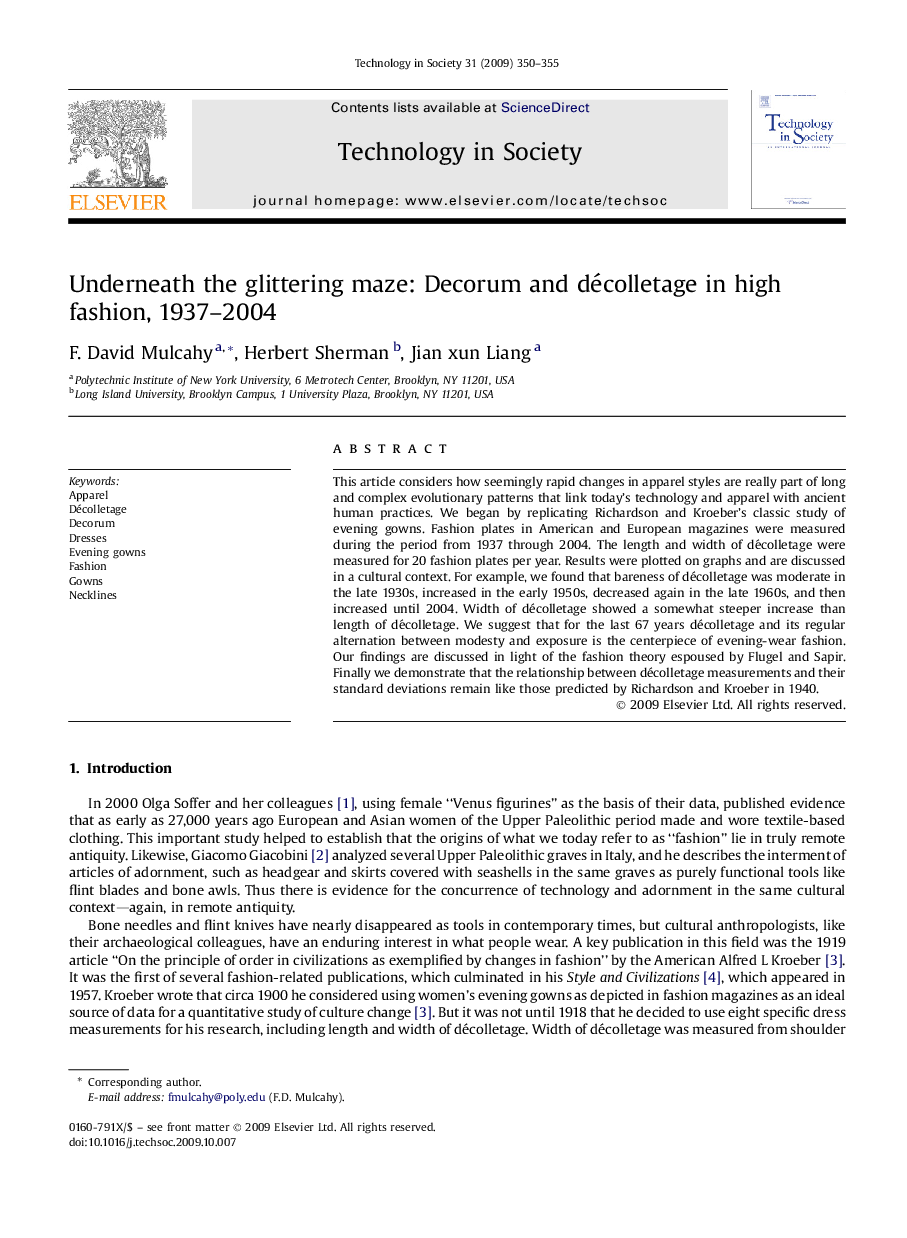| Article ID | Journal | Published Year | Pages | File Type |
|---|---|---|---|---|
| 375285 | Technology in Society | 2009 | 6 Pages |
This article considers how seemingly rapid changes in apparel styles are really part of long and complex evolutionary patterns that link today's technology and apparel with ancient human practices. We began by replicating Richardson and Kroeber's classic study of evening gowns. Fashion plates in American and European magazines were measured during the period from 1937 through 2004. The length and width of décolletage were measured for 20 fashion plates per year. Results were plotted on graphs and are discussed in a cultural context. For example, we found that bareness of décolletage was moderate in the late 1930s, increased in the early 1950s, decreased again in the late 1960s, and then increased until 2004. Width of décolletage showed a somewhat steeper increase than length of décolletage. We suggest that for the last 67 years décolletage and its regular alternation between modesty and exposure is the centerpiece of evening-wear fashion. Our findings are discussed in light of the fashion theory espoused by Flugel and Sapir. Finally we demonstrate that the relationship between décolletage measurements and their standard deviations remain like those predicted by Richardson and Kroeber in 1940.
